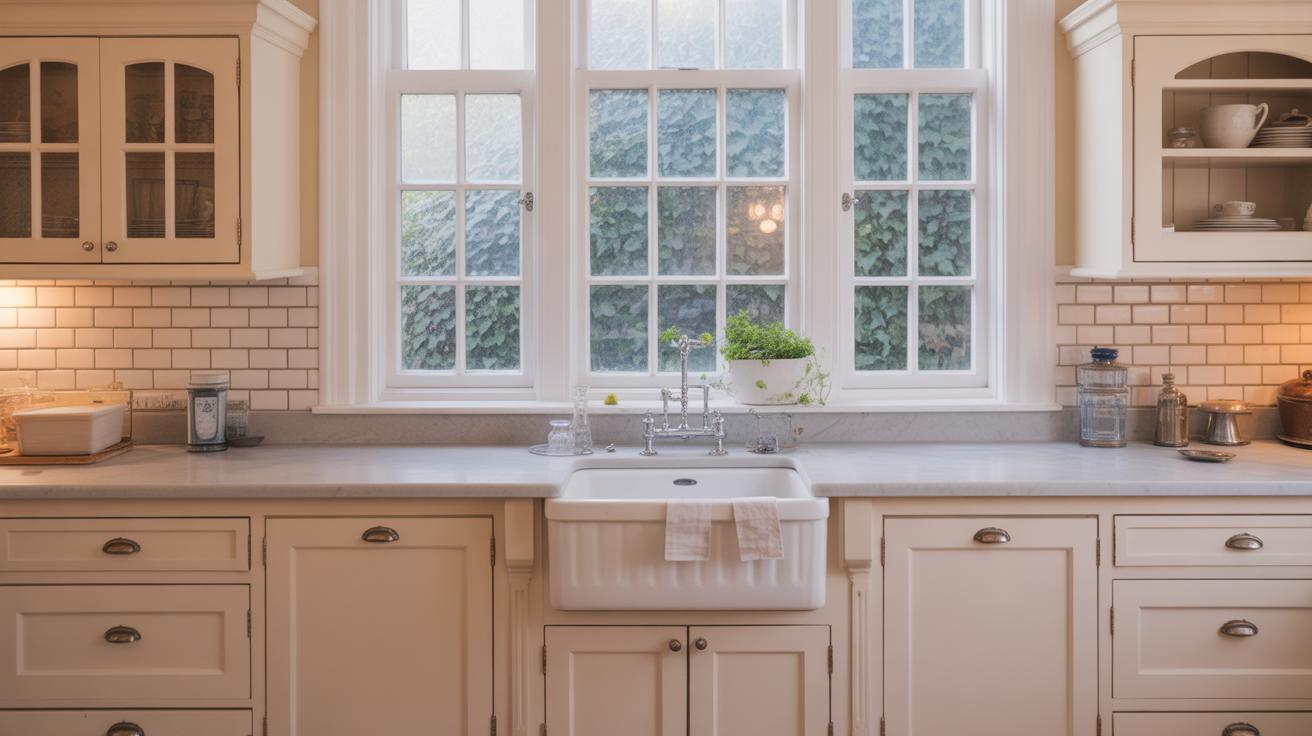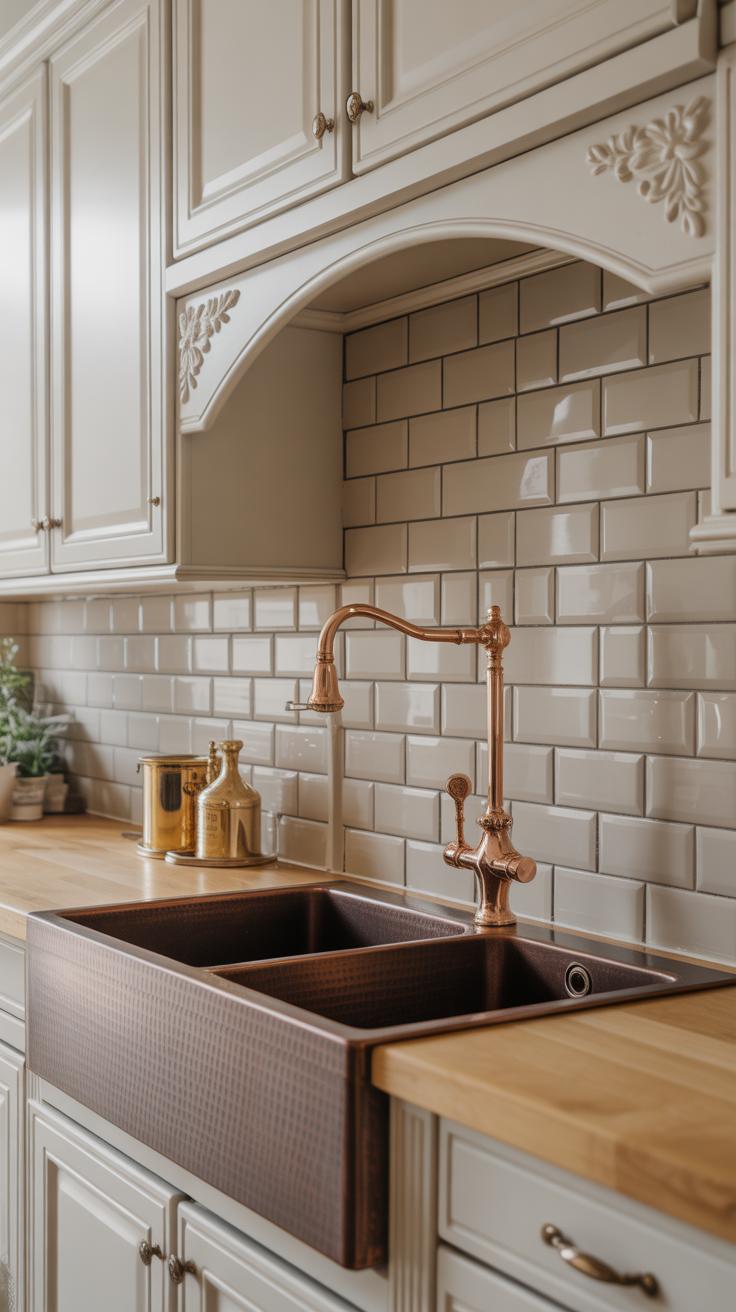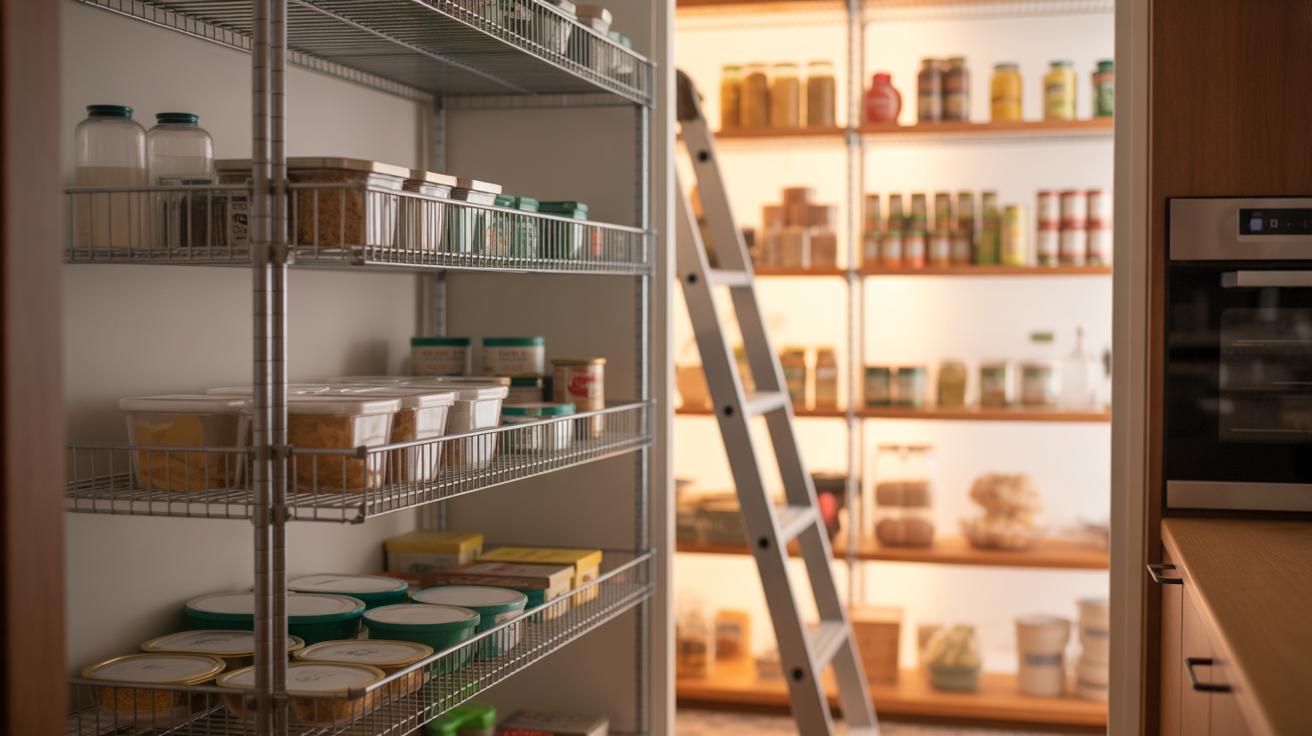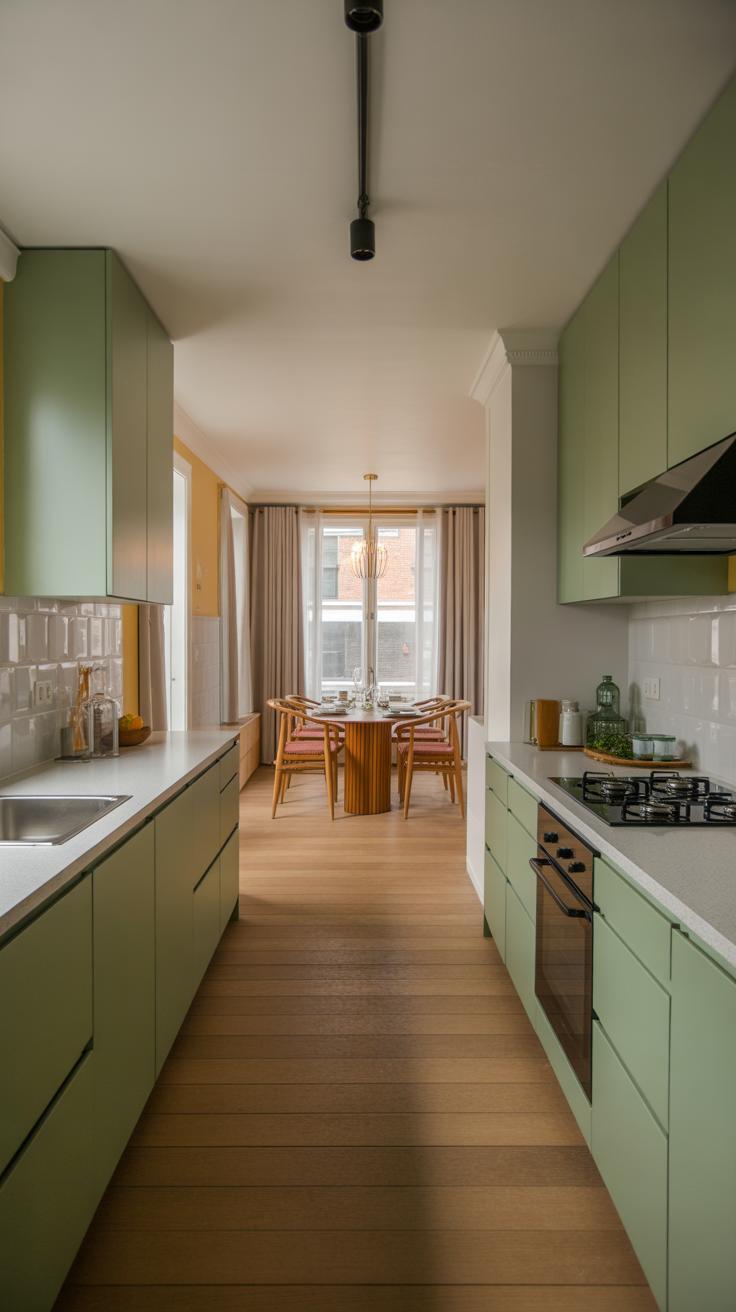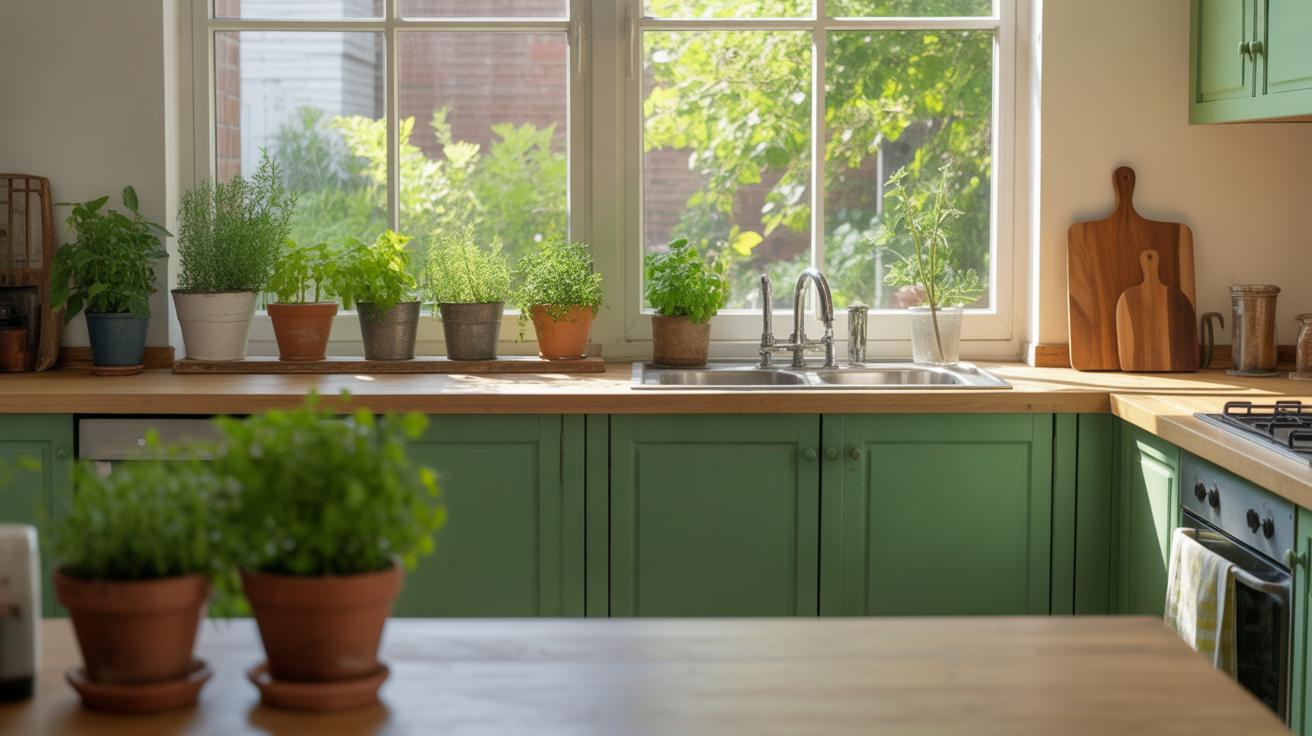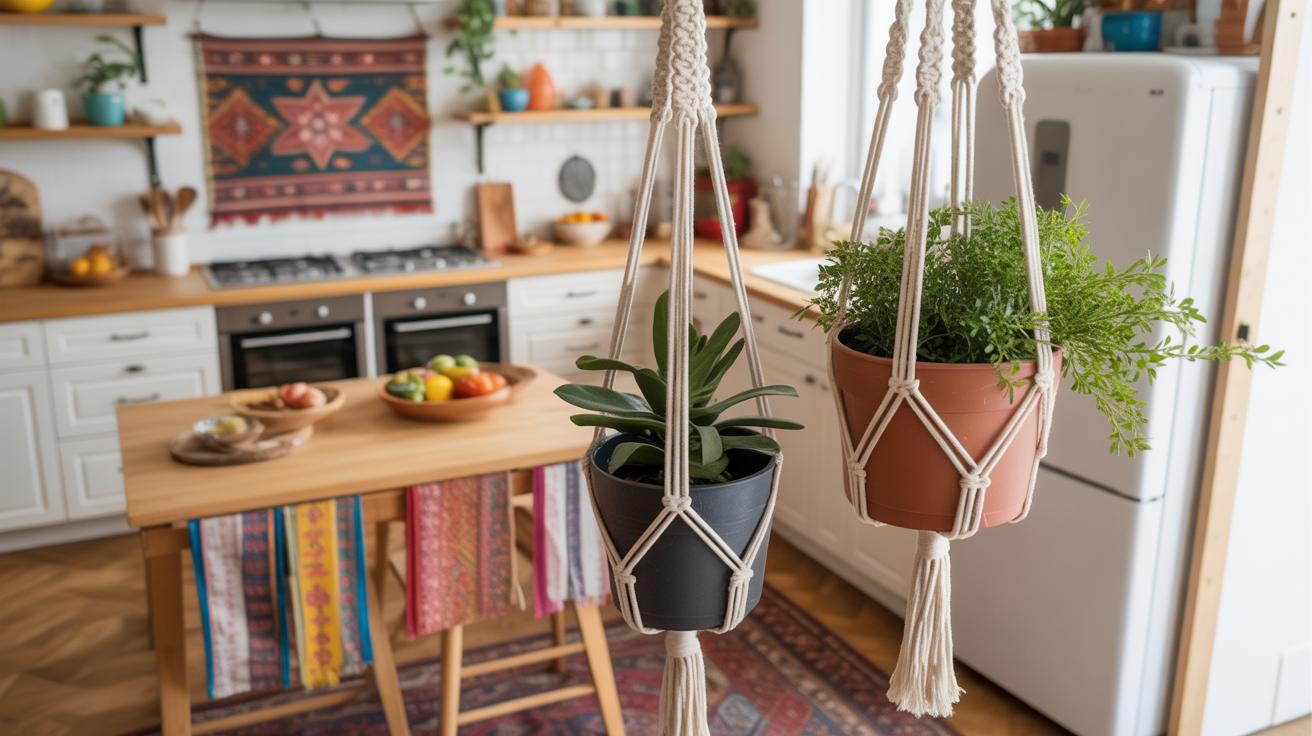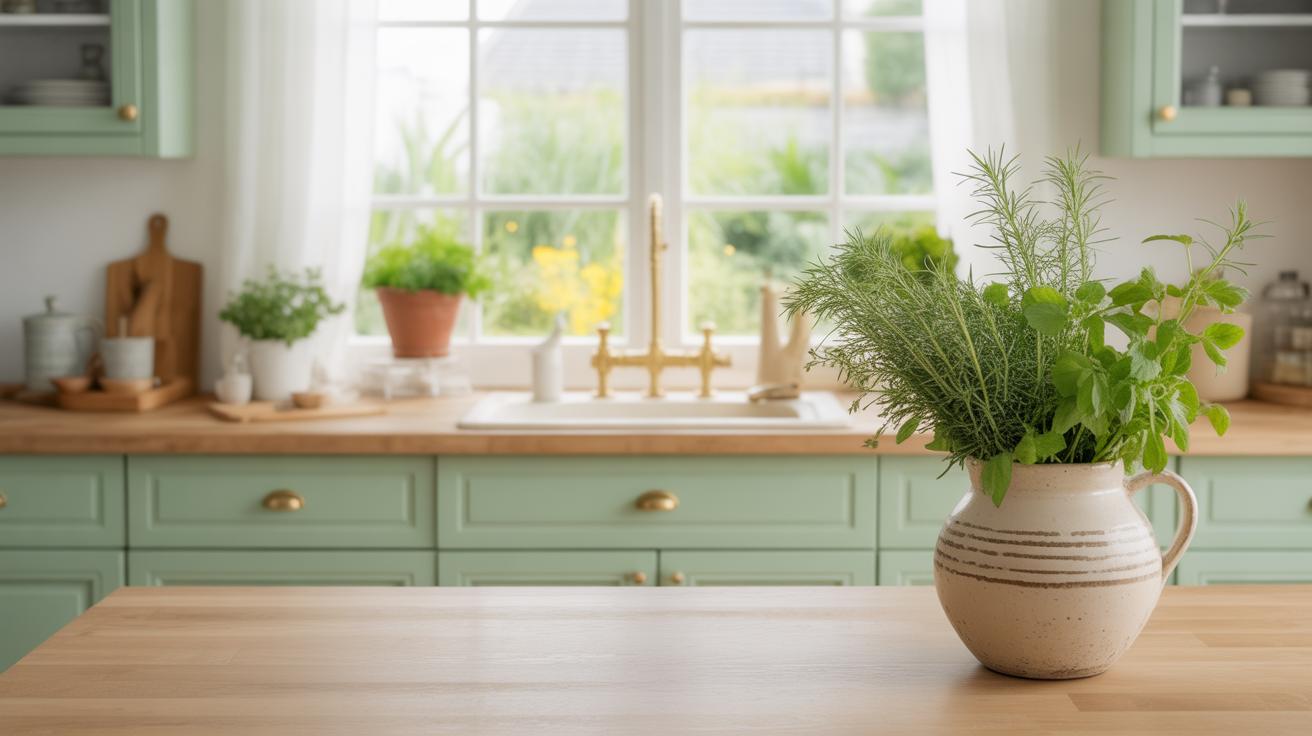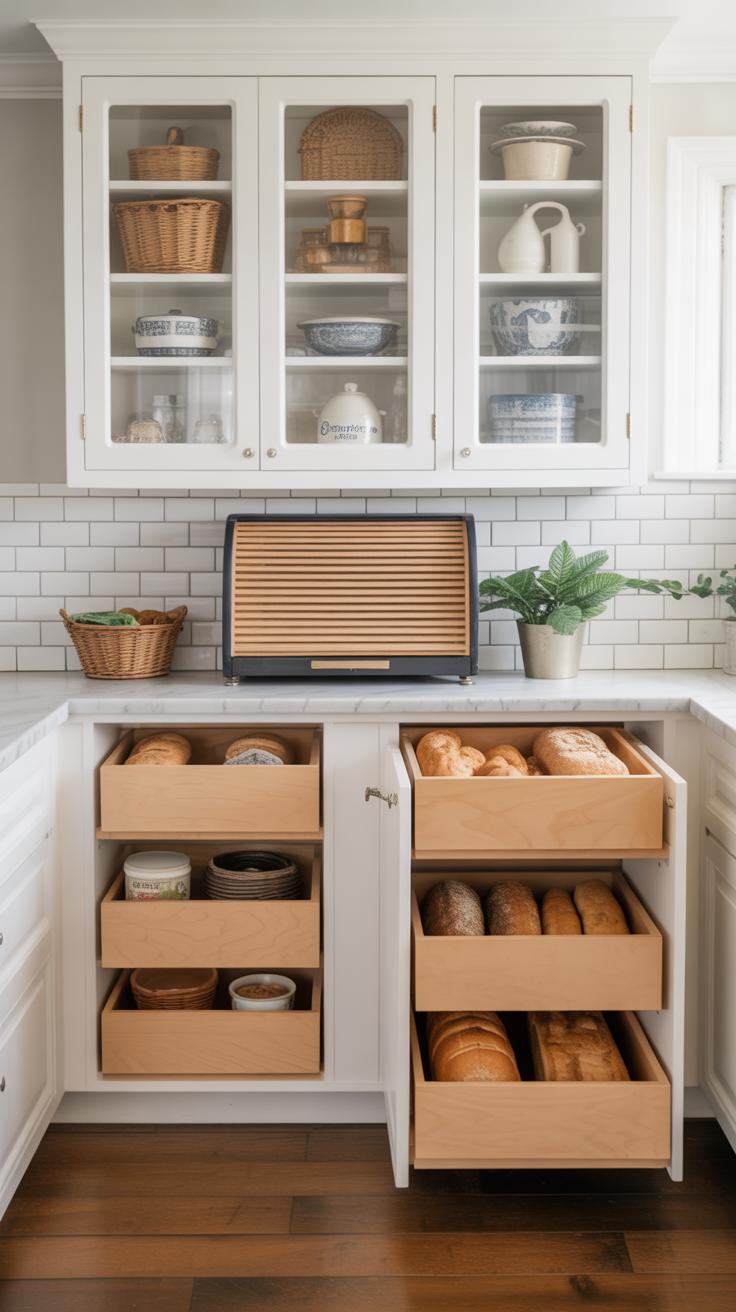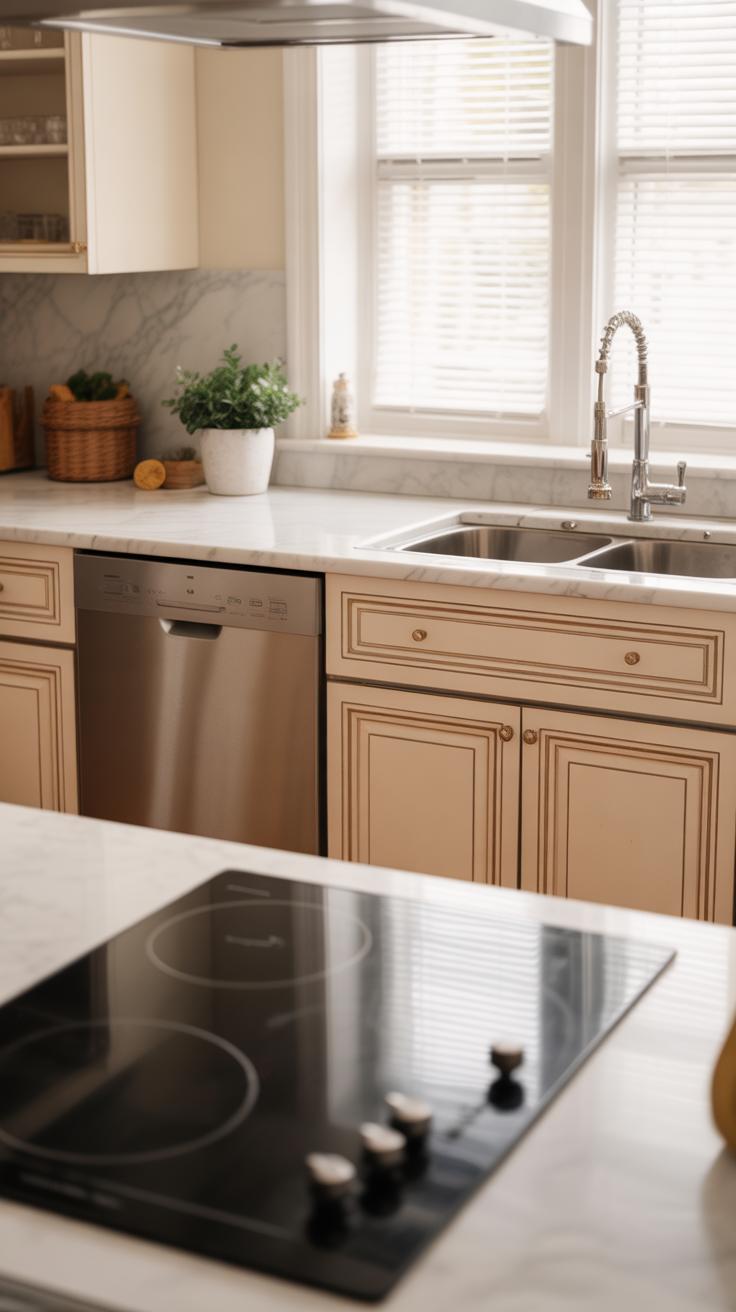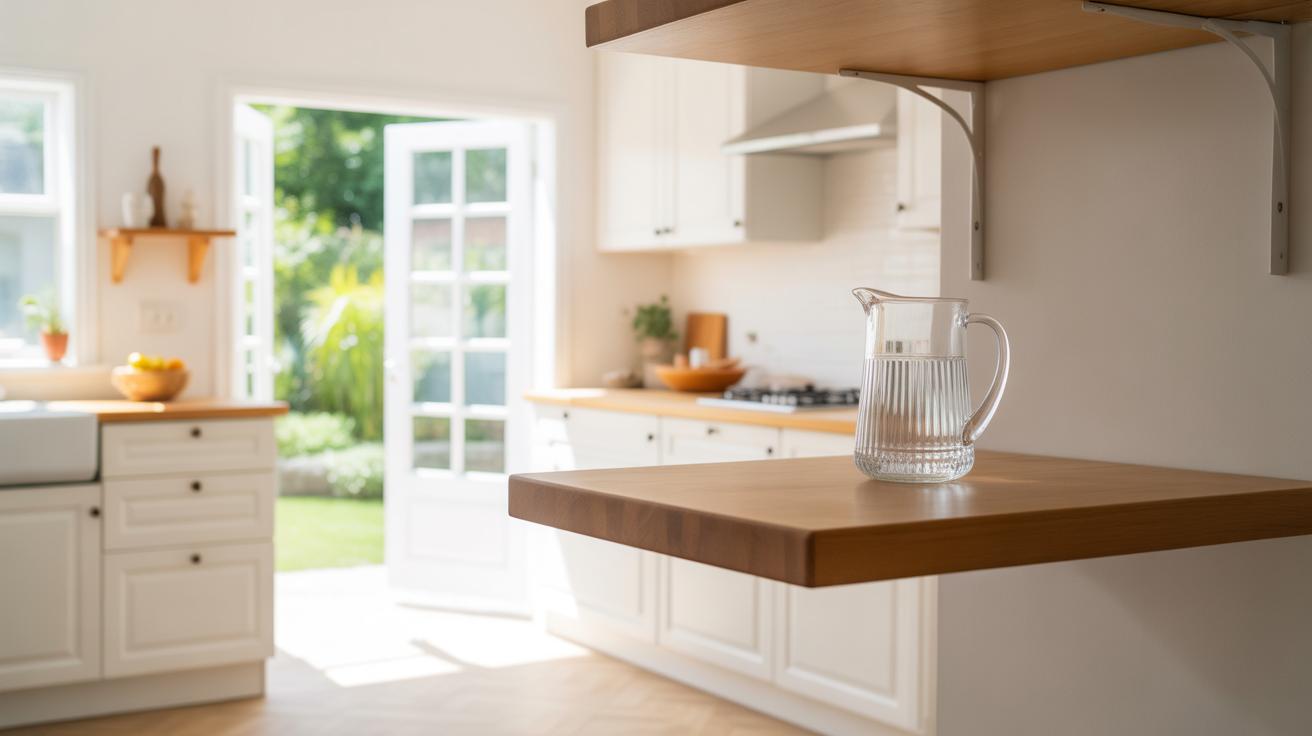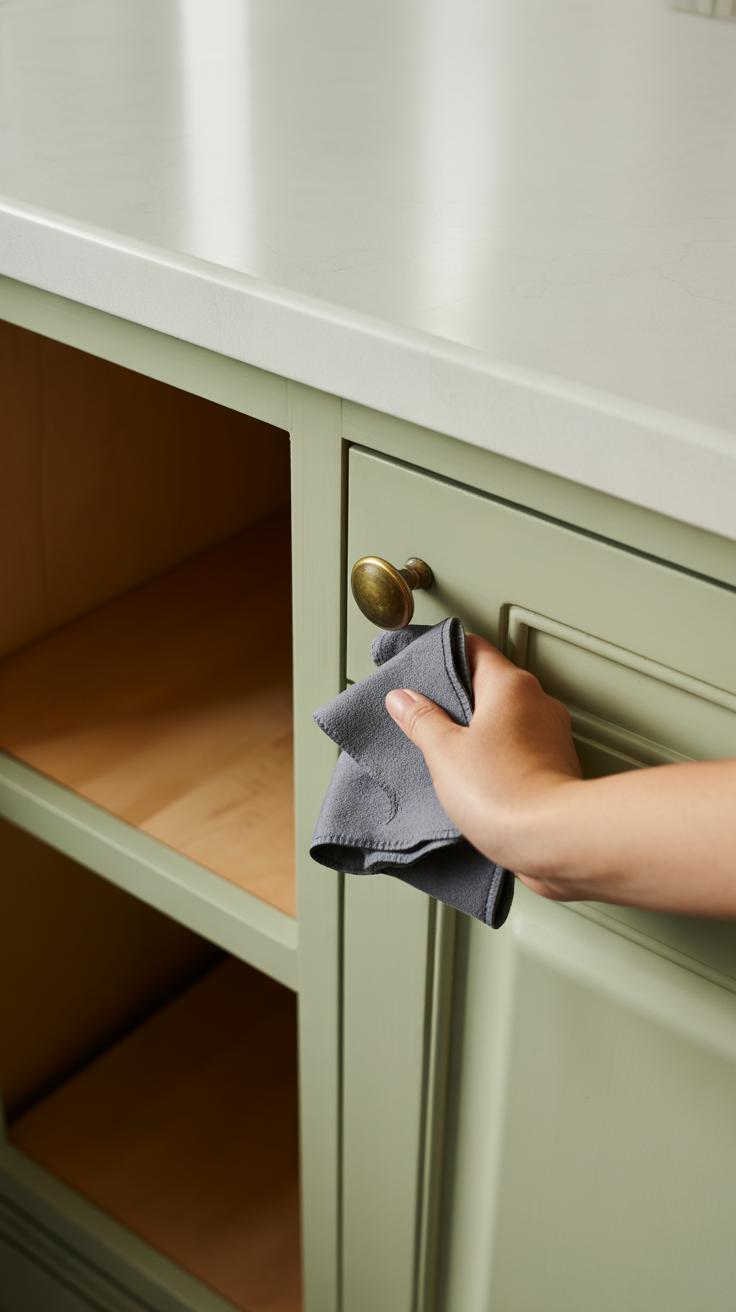Introduction
Classic kitchen designs never go out of style. They blend tradition with functionality, creating inviting and comfortable spaces for cooking and gathering. This article takes you through classic kitchen design ideas that stand the test of time. You will find useful insights to help you create a kitchen that feels warm and elegant without feeling outdated.
We will explore the key elements that define a classic kitchen, including layout, materials, color choices, and more. You will also get tips on how to combine these features in a way that suits your style and daily needs. Whether you are updating an existing kitchen or planning a new one, these ideas will guide you to make smart and lasting choices.
What Makes a Kitchen Classic
A classic kitchen has a certain quiet confidence. It doesn’t shout trends or follow fleeting fads. Instead, you’ll notice timeless styles like shaker cabinets, simple moldings, and balanced proportions. These kitchens often use natural materials—think solid wood, marble or quartz countertops, and ceramic tiles. Colors tend to be restrained, leaning toward whites, creams, soft grays, or muted blues. They create a calm, welcoming atmosphere that doesn’t feel overwhelming or busy.
The layout usually focuses on practicality. Whether it’s a straightforward, functional U-shape or a modest galley, classic kitchens prioritize easy movement and clean work zones. These features remain popular because they just work, in a way that rarely feels outdated or hard to live with.
Core Elements of Classic Kitchens
At the heart of classic kitchens lies cabinetry. Raised-panel or shaker doors in painted or stained wood are typical. They offer charm without fuss. Countertops often favor natural stone or engineered surfaces that mimic it, balancing durability and style. Floors might be hardwood, stone, or timeless tile patterns, connecting the kitchen with the rest of the home visually and functionally.
Details like crown molding, beadboard backsplashes, and traditional hardware add subtle character, but not too much. The overall effect is neat and orderly, comfortable yet refined.
Why Classic Styles Endure
Classic kitchen designs feel familiar, like a place you can settle into. They aren’t tied to a specific decade, so they age well. You might find a classic kitchen in a colonial farmhouse or a modern suburban home—it adapts. These designs let you update surfaces or accessories without needing a complete overhaul. Perhaps they endure because they bridge style and function, providing a reliable canvas that few styles can match.
Do you want your kitchen to feel like a natural part of your home, not a statement piece you’ll tire of quickly? That’s where classic kitchens make sense.
Choosing the Right Layout
Popular Classic Kitchen Layouts
When thinking about classic kitchen layouts, a few come up time and again for good reason. The U-shape layout is a favorite because it creates a natural triangle between the fridge, sink, and stove. This actually makes cooking feel logical and less like a maze. You might picture three walls forming this shape, offering plenty of counter space and storage without much wasted space.
Then there’s the L-shape, which tends to open up the room a bit more. It works well in more open floor plans or smaller spaces. It’s practical, easy to move around in, and lets you add a dining table or island if the space allows. You get this cozy corner workspace, but it still feels airy enough for socializing or multitasking.
The galley layout feels almost old-fashioned but in a good way. Think of two parallel counters with a walkway in between. Despite looking narrow, it’s surprisingly efficient for prepping and cooking without distractions. Classic kitchens often use this layout when space is limited but functionality can’t be compromised. It’s not for everyone, though. Some might find it a bit confining.
Planning for Function and Flow
One tricky part is figuring out how to place the cooking, prepping, and cleaning zones so none of them get in each other’s way. My advice? Start with the work triangle idea—but don’t be too strict about it. Complete separation might slow you down, but if everything is jammed together, it’s a mess waiting to happen.
Try to keep the prepping area between the sink and stove. It’s where you do most of the hands-on work, so it should have clear counters and maybe even extra lighting. Cleaning areas near the sink and dishwasher, with trash nearby, make clean-up less of a chore. Cooking zones around the stove and oven should be alert to safety—far enough from the edge but still accessible.
Think about how you move between these zones during a typical meal. Sometimes, it’s tempting to cram too much in a small space or spread things out too far. So, ask yourself if the layout fits your daily rhythms, not just looks nice on paper.
Material Choices That Last
When it comes to classic kitchens, materials are more than just practical elements; they tell a story. Wood, stone, and ceramics often take center stage, each bringing durability and a style that can stand up to changing trends. Wood, especially hardwoods like maple, cherry, or oak, remains a popular choice for cabinets. These woods age well, gaining character rather than losing appeal. You might notice some wear over time, but it’s the kind of aging that adds warmth rather than detracts from the space.
Stone countertops—granite or marble—are common favorites here. They resist scratches and heat to a certain extent, though marble can be a little more delicate than people sometimes expect. Still, the natural veining and texture add depth you just don’t get with synthetic surfaces. Quartz also fits the bill for a less fussy alternative, offering some stone-like qualities with easier upkeep.
Ceramics, especially in backsplashes or even floor tiles, provide a solid, moisture-resistant surface that fits right into the timeless aesthetic. They’re easy to clean, which is rarely a bad thing in a kitchen, and come in patterns and glazes that can either blend quietly or add subtle interest.
Speaking of floors, classic kitchen designs often choose hardwood or natural stone tile. Both last a long time when cared for properly. Hardwood floors share the warmth of wood cabinets but require some maintenance; they aren’t a fan of too much water. Stone flooring, such as travertine or slate, handles moisture better and can bring a sense of grounded stability, though it might feel cooler underfoot. Vinyl or ceramic tile sometimes find their way in here too, especially in historic kitchens, offering durability without straying from the classic vibe.
Balancing these materials can feel a bit tricky. Do you prioritize warmth? Or is ease of care more important? Classic kitchens tend to find ways to do both, often relying on materials that naturally wear well. What do you think fits your lifestyle better—the lived-in charm of wood or the cool touch of stone?
Color Palettes to Consider
Classic kitchens often feel calm and inviting, and a big part of that comes from their color choices. Whites and creams are a natural go-to here—there’s something about their softness that opens up the room and keeps things bright without feeling stark or cold. I’ve noticed kitchens with cream cabinets feel warmer and more lived-in than pure white ones, but the difference can be subtle.
Blues, especially lighter and muted shades, also play well in classic kitchens. Think of pale blue walls or cabinetry that brings a quietly refreshing vibe, without shouting for attention. Blue works well with natural wood tones too, which ground the space and make it feel authentic. You might spot oak or walnut accents throughout, lending a touch of tradition and texture.
These colors don’t just look good—they influence how the space feels. Whites and creams can make smaller kitchens seem larger, while wood tones add depth and warmth. Blues introduce calm, balancing the brightness and earthiness.
Neutral Colors for Timeless Appeal
Neutral tones rarely go out of style. That’s why they work so well in classic kitchens. Neutrals act as a blank canvas, allowing other design elements to breathe. They prevent the space from feeling dated quickly, which is a relief if you don’t want to repaint every few years.
Grey, beige, warm taupe—they all fit here. I remember a kitchen I saw where soft greys on the cabinetry paired with a white marble countertop made the whole room feel elegant yet approachable. Neutral colors also make it easier to switch accent pieces or change lighting styles later. Plus, they’re generally peaceful to the eye, which might explain why they’re so popular.
Adding Accent Colors
To keep things from looking flat, adding accents is helpful—but they should be subtle. A dusty green, soft mustard, or even a muted terracotta can add personality without overwhelming the timeless feel. Imagine a pale green backsplash tile set against cream cabinets, or brass hardware with a hint of warmth.
These accents can appear in small doses: a few accessories, cushions on a breakfast nook chair, or even painted shelves. They offer a nice visual break, making the kitchen stand out just enough. I guess the question is—what feels natural to you? Balance is key, so you don’t accidentally tip the kitchen away from classic toward something trendier or too bold.
Lighting and Fixtures in Classic Kitchens
Layered Lighting for Practical Use
Lighting in a classic kitchen isn’t just about brightness—it’s about creating different moods and supporting various activities. Think of it like layers. Ambient lighting sets the general tone, often from ceiling-mounted fixtures or recessed lights, giving the space a warm, inviting base. Then comes task lighting, which you need for food prep and cooking. Under-cabinet lights or pendant lamps over an island are great here, offering focused illumination without shadows. Finally, accent lighting adds a subtle touch, highlighting architectural features or displaying china and glassware. Stringing gentle light along moldings or inside glass cabinets works well for this.
All three layers combine, but you don’t always need them all switched on. Sometimes, soft ambient light alone feels just right for a quiet evening in the kitchen.
Choosing Classic Fixtures
Picking fixtures and hardware that match classic aesthetics takes a bit of attention. You’re looking for shapes and materials that feel timeless—think brass or bronze finishes, clear glass shades, and simple, elegant forms. Chandeliers with subtle curves or lantern-style pendants often capture this style well. Try to avoid anything too modern or ornate; the goal is balance, not flash. Classic kitchens lean toward fixtures that look like they’ve belonged there for years, even if they’re new.
Hardware, like drawer pulls and knobs, should echo this restraint too. Choose designs with clean lines or soft detailing, and finishes like polished nickel or aged bronze. Matching these elements across lighting and cabinets helps pull the whole look together, making the kitchen both beautiful and practical. Have you ever noticed how just swapping out old knobs can change the feel of a room?
Incorporating Storage Solutions
Keeping a classic kitchen tidy can be a real challenge, especially because these spaces often invite more decorative items alongside everyday tools. Built-in cabinets and shelves offer a straightforward solution. They fit right into the overall design, avoiding cluttered countertops and mismatched storage units. You might want to consider deep drawers beneath counters for pots and pans or open shelves tucked neatly above for frequently used dishes. This approach keeps everything within reach but out of sight, which feels practical yet still intentional.
But sometimes the usual shelves and cabinets aren’t enough. Pull-out shelves can be surprisingly helpful, especially for those hard-to-reach corners or lower cabinets. Imagine grabbing a full rack of spices or canned goods without crouching and digging through piles. Pantry organizers also add a useful layer of order—divided bins, tiered racks, or rotating carousels can help you see what you have at a glance, which might prevent buying duplicates. These smart options help your kitchen stay clear without feeling stuffed or overwhelming. Wouldn’t you agree that storage has to be as accessible as it is attractive in a classic kitchen?
Appliances and Modern Touches
Blending modern appliances into a classic kitchen can feel like walking a fine line. You want the convenience of today’s technology without disrupting a timeless look that has character and warmth. The trick lies in choosing appliances that don’t scream “new” but instead harmonize with the overall style.
When selecting appliances, think about colors and finishes that echo traditional elements. Cream or soft pastel-colored fridges, or even ones with panel-ready fronts, can disappear into cabinetry gracefully. Stainless steel is popular, but does it always fit? Sometimes, a subtle bronze or black matte finish works better in maintaining that classic vibe.
Also, consider appliances with rounded corners or retro-inspired shapes. They tend to fit the aesthetic better than sharp, futuristic designs. You might notice brands today offer lines specifically designed for classic kitchens — that’s worth exploring.
On the tech side, adding smart features doesn’t mean installing gadgets everywhere. Instead, opt for discreet integrations:
- Smart ovens with hidden touchscreens that only appear when needed
- Voice-activated assistants tucked away or embedded in cabinetry
- Lighting systems controllable by app but using traditional-style fixtures
It’s easy to go overboard, but a careful, minimal approach keeps your kitchen feeling authentic. I remember a friend who added a smart fridge door screen, but it stood out too much and disrupted their vintage shaker style. That subtlety is key. Sometimes less tech really is more, especially when the goal is timeless charm with modern benefits.
Maintaining Your Classic Kitchen
Keeping a classic kitchen looking fresh isn’t always straightforward. The materials—like natural wood, marble, or vintage-style fixtures—need a bit of special care. You can’t just scrub everything with harsh cleaners and expect them to hold up. It’s tempting to rush cleaning when you’re busy, but a gentle routine protects those timeless surfaces better in the long run.
Regular Cleaning Practices
For wooden cabinets, a soft cloth with mild soap and water usually does the trick. Avoid soaking the wood; damp is fine, but avoid drips. Marble countertops, on the other hand, respond best to pH-neutral cleaners—you want to skip anything acidic, like lemon or vinegar. It can dull the finish or even etch the surface.
Stainless steel fixtures need polishing to avoid smudges, but abrasive pads can scratch them. A microfiber cloth and a little olive oil or specialized cleaner work wonders. And porcelain sinks like frequent but gentle wipes to avoid stains setting in. Something I keep forgetting is how often crumbs and spills hide in grooved handles or paneling edges—those spots really benefit from a quick brush or vacuum before wiping down.
Preventive Care and Repairs
You probably don’t think about the wear on your classic kitchen every day. Still, small things add up. Tighten cabinet hinges when you hear a creak—it stops further damage. Look under sinks for leaks early; water and wood don’t mix well over time. A little wax on wooden surfaces every few months can seal in moisture and keep scratches at bay. If you notice chips in tile or cracks in stone, it’s better to fix them quickly before dirt settles in and makes the repair harder.
Do you check your kitchen fixtures regularly? Sometimes a slight drip or loose handle signals bigger problems if ignored. Prevention here means you avoid replacing expensive vintage elements sooner than necessary. Small routines, like wiping spills immediately and drying surfaces, really matter. It feels like extra effort, but your classic kitchen will thank you for it.
Conclusions
Your kitchen can be both classic and practical. By focusing on proven design elements like functional layouts, quality materials, and balanced colors, you create a space that works well every day and welcomes friends and family. Classic kitchens are more than looks; they support your daily life with comfort and ease.
Remember, design is about choices. Think about what fits your cooking style and lifestyle. Use these ideas to find the right balance between lasting tradition and your personal touch. In the end, your classic kitchen will be a space you enjoy for many years.

